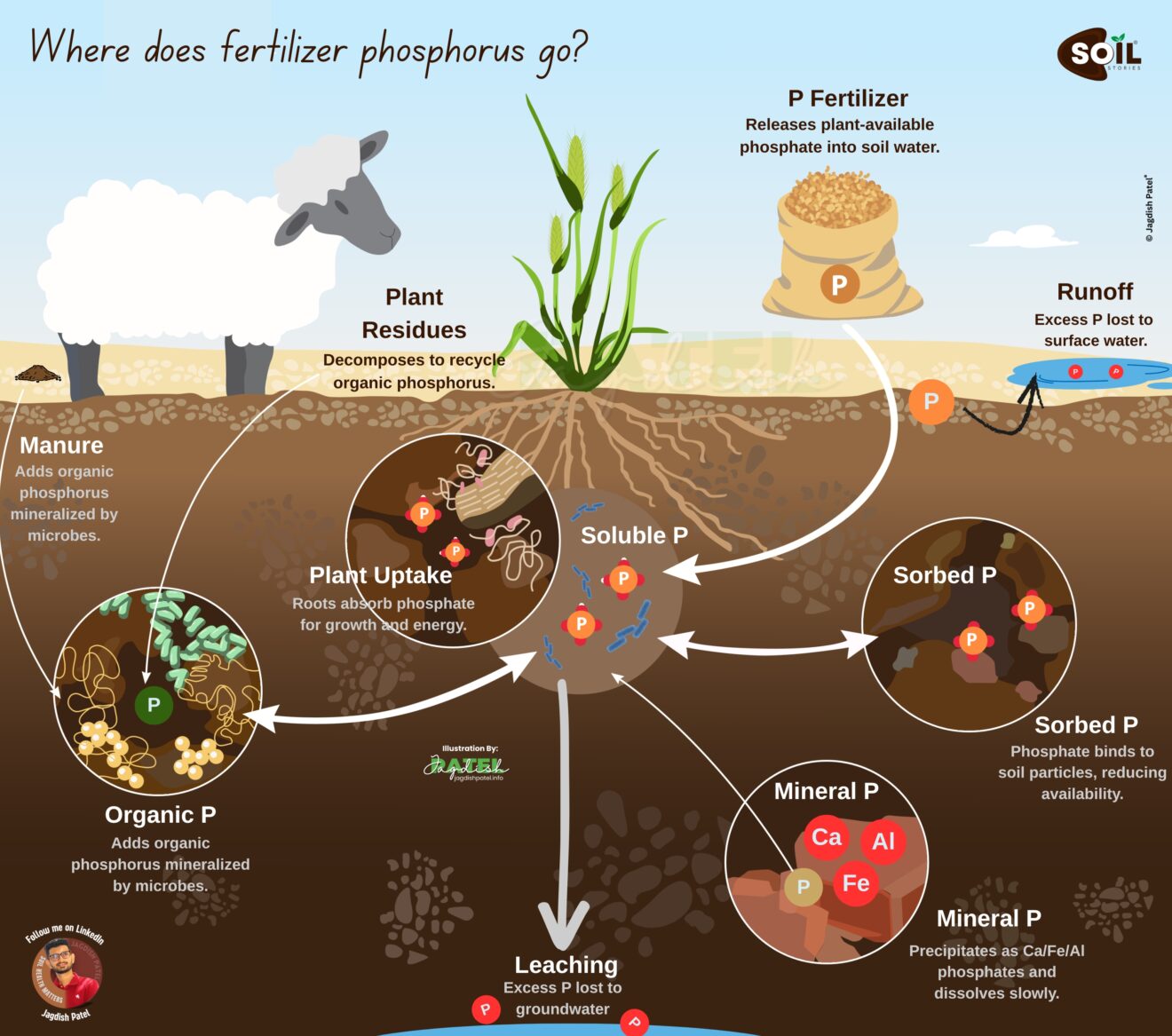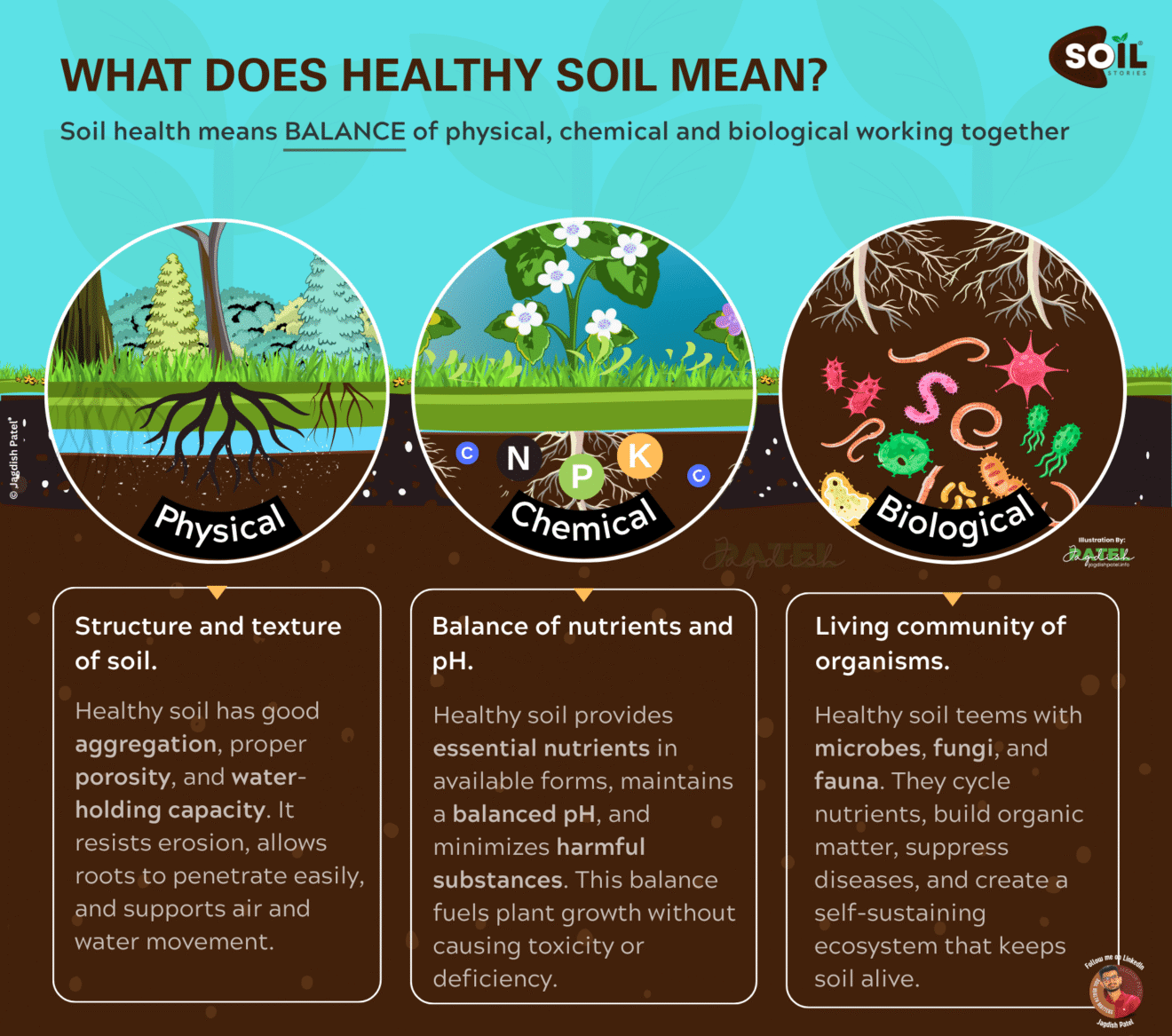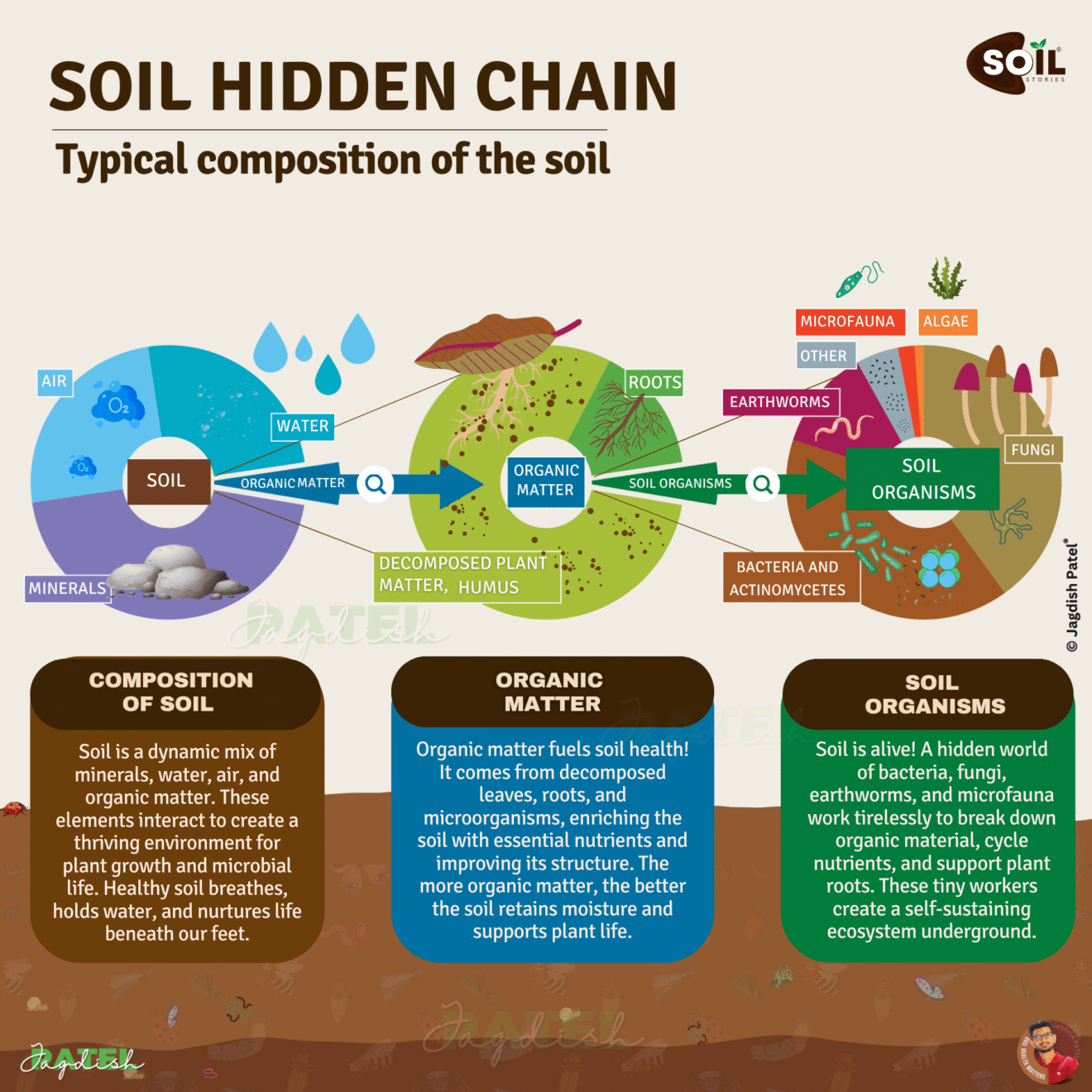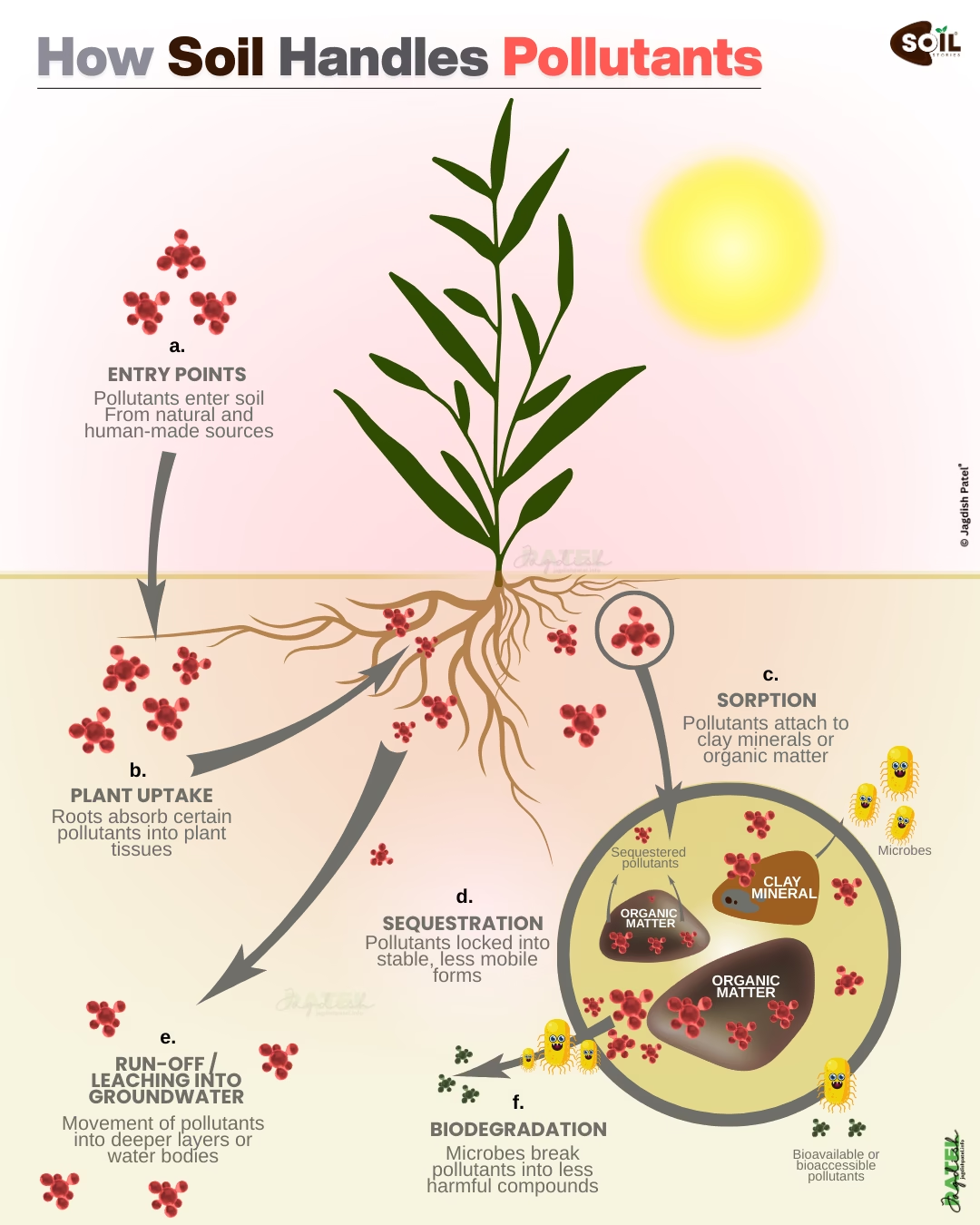What if the most biodiverse ecosystem on Earth isn’t the Amazon rainforest or a coral reef, but the ground beneath your feet? One teaspoon of healthy soil contains more living organisms than there are people on the planet. Yet this invisible world, which literally keeps us alive, is vanishing ten times faster than nature can rebuild it. Most of us have never given it a second thought.
The Soil Crisis No One’s Talking About
Here’s an uncomfortable truth most people miss: every single bite of food you eat depends on just 6 inches of topsoil. That’s it. Not technology or innovation, or the latest farming app, just soil.
- 95% of our food comes directly or indirectly from soil.
- We’ve lost one-third of our farmable soil in the last 40 years.
- It takes 1,000 years to naturally build just three centimeters of topsoil.
- Soil is home to nearly 60% of all species on Earth, making it the most biodiverse habitat known.
Although we focus on protecting forests and oceans, the ecosystem beneath us contains more than half of all life and is disappearing fast.
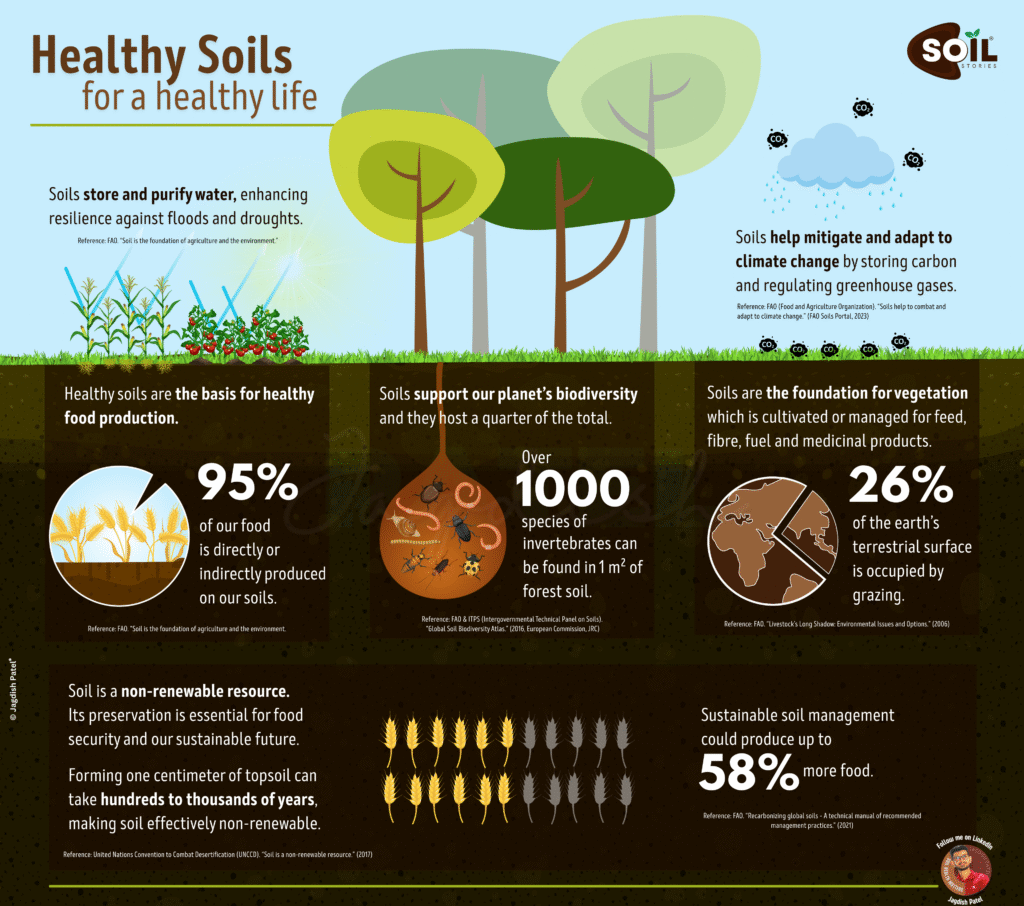
Why Soil Matters More Than You Think
Soil is a complex, living network that underpins almost everything in the biosphere.
Climate Regulation:
Healthy soil stores more carbon than the atmosphere and all forests combined. If soil degrades, that carbon escapes into the air, which accelerates climate change.
Water Security:
Soil acts as nature’s water filter and as a flood prevention system. Compacted and eroded soils threaten water quality and increase flood risk, with millions of hectares affected around the world.
Biodiversity Hub:
Soil supports a quarter to nearly 60% of Earth’s biodiversity. A single square meter of forest soil can contain over a thousand invertebrate species, many of which are crucial for ecosystem health.
Food Security:
Without fertile soils, no amount of technology will keep agriculture productive. No soil means no food.
The Invisible Collapse
This crisis is dangerous precisely because it is mostly invisible. We lack comprehensive global monitoring systems for soil biodiversity. Many places do not have standardized measurements to track soil health or species loss. Areas managed for intensive agriculture and urbanization show clear declines in soil biodiversity. Compaction, erosion, and chemical overuse disrupt the living networks that keep soil functional.
The organisms we are losing decompose organic matter, cycle nutrients, fix nitrogen, and maintain essential ecological functions. Without them, basic ecosystem processes break down.
There Is a Solution
This crisis can be solved. Nature takes centuries or longer to build healthy soil, but regenerative practices like cover cropping, reduced tillage, diverse crop rotation, and composting can restore soil health in just three to five years.
Major companies, including Patagonia, General Mills, and Walmart, are now investing billions in soil restoration. They are motivated not by charity but by the fact that healthy soil is essential for business survival. Global commitments such as the 30×30 initiative (protecting 30% of land and sea for biodiversity by 2030) recognize that restoring above-ground habitats requires protecting below-ground life as well. Soil biodiversity is foundational for ecosystem resilience.
When Did You Last Think About Soil?
Most of us never consider where our food really comes from, not the grocery store or the farm, but the soil. That morning coffee, lunchtime sandwich, or afternoon apple all depended on a few inches of topsoil.
We often treat soil as infinite, disposable, and replaceable, but it is not.
Why This Matters Right Now
The hidden network beneath our feet feeds the world’s population every single day. It filters our water, stores our carbon, and hosts most of Earth’s life. It is rapidly vanishing.
Unlike many global crises, though, we already know the solutions. We can restore soil health and many organizations are acting. What’s needed most is awareness and action, because you cannot protect what you do not see or value what you do not understand.
The Question That Changes Everything
When was the last time you thought about the soil that grew your breakfast?
If your answer is “never,” you’re not alone. That gap in awareness is exactly the problem. Soil is the foundation of life. It’s time we recognized and protected it.
Visit my visual storytelling gallery, where science meets design through engaging infographic-style graphics that awaken curiosity and make complex scientific ideas simple, visual, and inspiring to read.
Whether you’re part of a sustainability organization, agri-tech company, or research group, I can help you transform your data and ideas into visuals that connect, educate, and inspire action.
📩 Let’s collaborate, reach me at jagdish@jagdishpatel.info or through www.jagdishpatel.info.
References
- Enumerating soil biodiversity — PNAS
- Soil biodiversity and function under global change — PMC
- The hidden majority in soil — PMC
- Linking soil biodiversity and vegetation — Wiley
- Blind spots in global soil biodiversity and ecosystem function research — Nature
- Toward a global platform for linking soil biodiversity data — Frontiers

